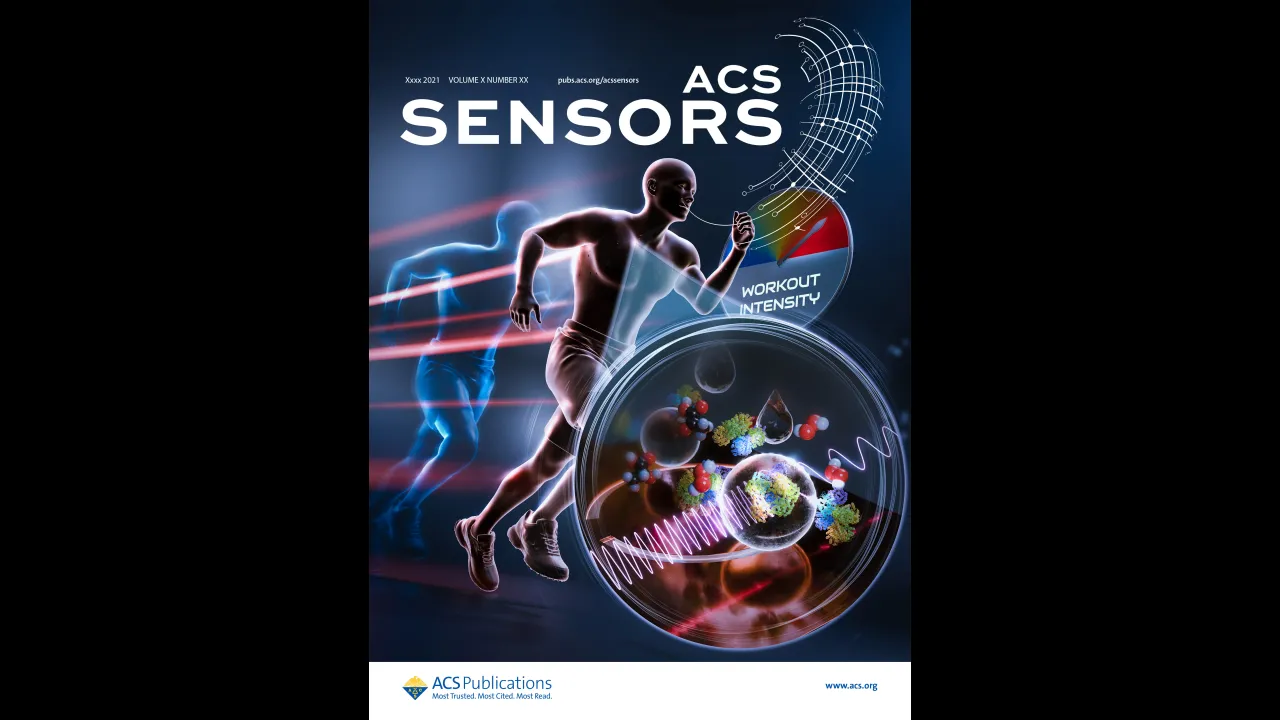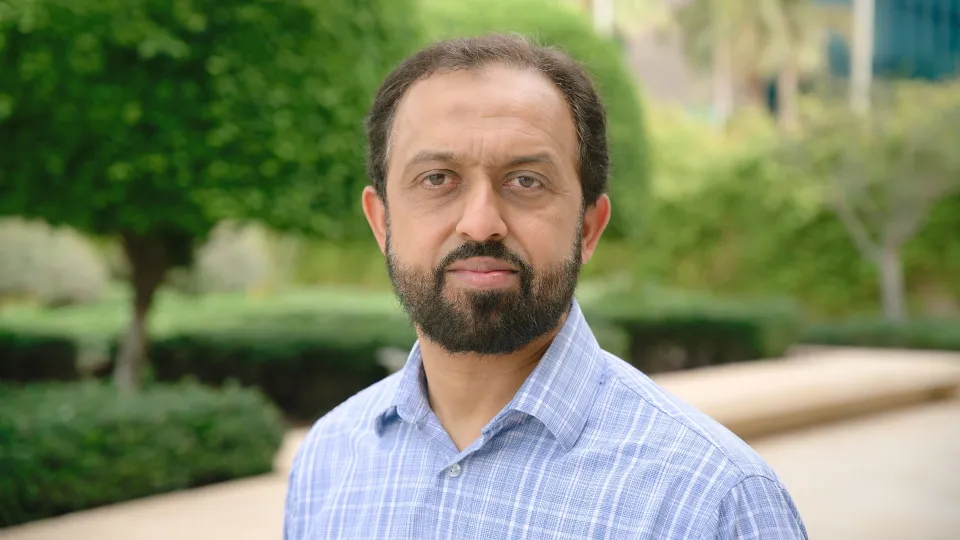
Breakthrough Microwave Biosensor Featured on Cover of ACS Sensors
About
PhD student Firas Fatani and the research team from Prof. Atif Shamim’s group have developed a microwave biosensor that achieves highly selective lactate detection in sweat—without the need for complex labeling or sample preparation. This innovative platform, recently featured on the cover of ACS Sensors, marks a significant milestone in wearable health monitoring.
The sensor integrates a complementary split-ring resonator (CSRR) with enzymatic functionalization embedded inside a soft, microfluidic channel, enabling real-time tracking of lactate levels through permittivity shifts. This passive sensing system operates via low-cost materials and scalable fabrication techniques, making it ideal for long-term, on-body applications.
Notably, this is the first demonstration of a fully printed on-skin microwave biosensor in Saudi Arabia designed specifically for lactate threshold detection—an essential biomarker for athletes and clinical patients alike. Beyond its selectivity, the device achieves strong signal stability, low detection limits, and operates without onboard power or batteries.
Because of its minimalistic design and robust enzymatic interface, the sensor paves the way for the next generation of low-cost, label-free wearable diagnostics in sports medicine and personalized healthcare.
Breaking the Specificity Barrier in Microwave Sensing: Highly Specific Lactate Microwave Biosensor for Fitness and Exercise Optimization
Firas Fatani, Sakandar Rauf, Apala Banerjee, and Atif Shamim
ACS Sensors 2025 10 (5), 3658-3668
DOI: 10.1021/acssensors.5c00470



